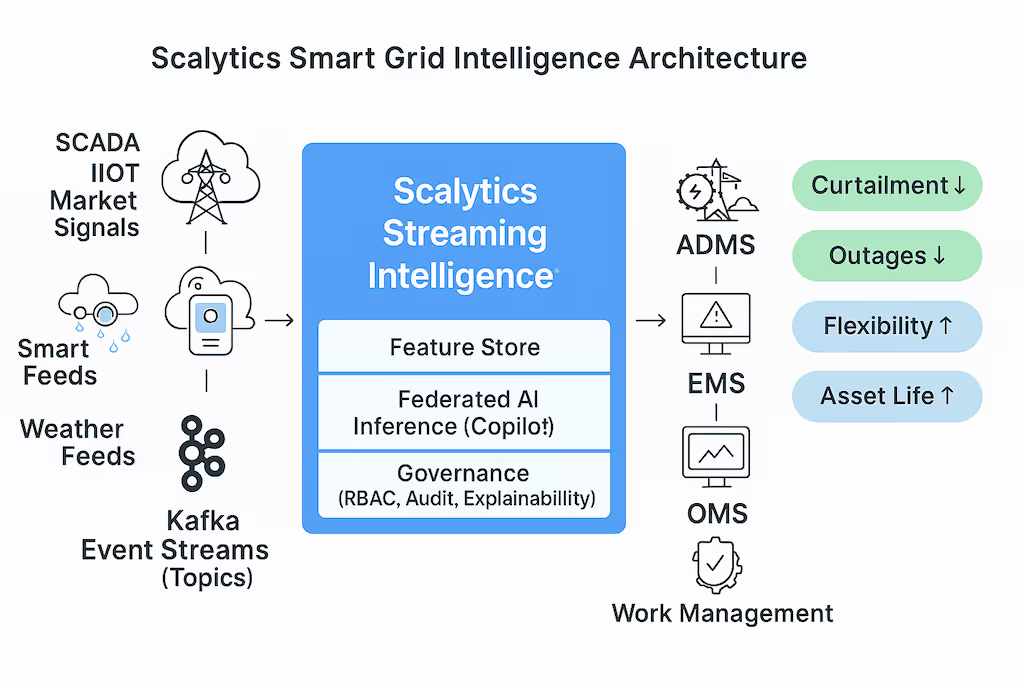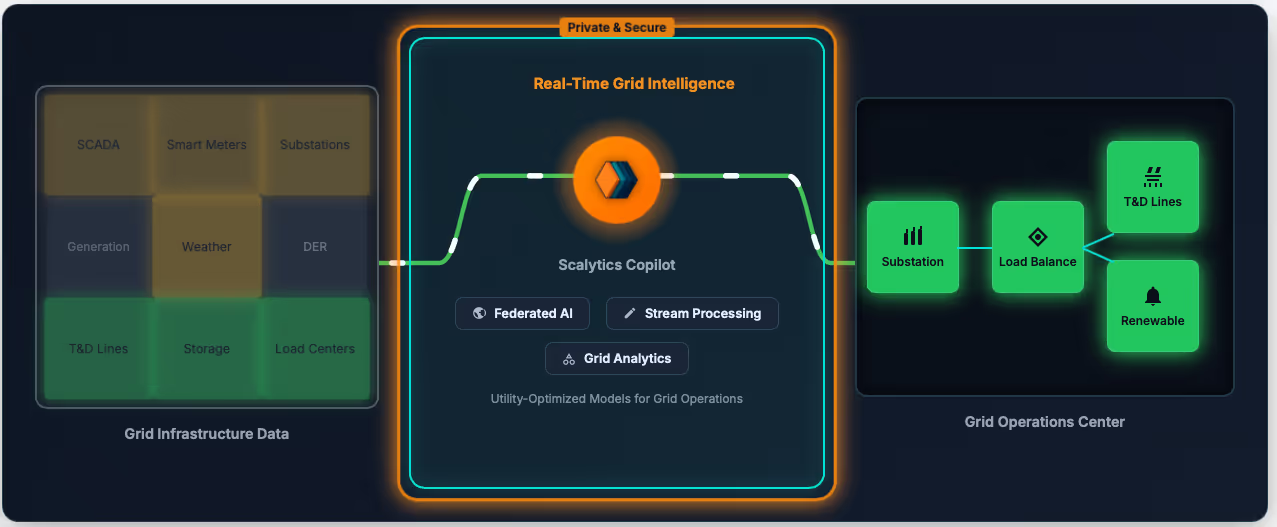SCADA Isn't Built for Real-Time Intelligence
Utilities rely on SCADA, historians, and OT systems built for monitoring — not adaptive decisioning. The result: curtailment costs, flexibility shortfalls, delayed fault detection, and siloed IT/OT operations. Too many AI initiatives in utilities fail for the same reasons — lack of transparency, limited flexibility, and concerns over how decisions are made.
Curtailment Cost Spiral
Redispatch and curtailment waste billions. Renewable output is throttled while storage and flexibility sit idle. Operators are forced to react after the fact instead of preventing congestion in real time.
Blind Spots at the Edge
Low-voltage networks, EV chargers, and distributed assets create instability that SCADA can’t see. By the time anomalies surface, outages are already cascading across feeders and substations.
Integration Deadlock
SCADA, IoT sensors, smart meters, and market signals all speak different languages. Middleware breaks. Data lakes collect terabytes — but decisions still arrive hours late.
Transparency Trap
AI pilots stall when operators can’t explain how decisions are made. Without audit trails, explainability, and human-in-the-loop governance, projects fail before they scale.


